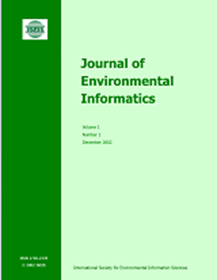Water Quality Prediction Based on an Innovated Physical and Data Driving Hybrid Model at Basin Scale
IF 5.4
1区 环境科学与生态学
Q1 ENVIRONMENTAL SCIENCES
引用次数: 0
Abstract
The prediction of basin water quality has become an urgent need for water environment management, where water pollution is on the increase. Currently, physical models are primarily used for water quality predictions, but the models are not adaptable for the automatic future prediction of watershed water quality owing to their non-automatic boundary setting. The development of big data, which has led to artificial intelligence (AI) technology, has remedied the deficiency of physical models and has been widely used in water quality prediction. However, the accuracy of AI models depends only on the quantity and quality of dataset, which is applied on specific and discrete sections with enough data and difficult to extend to regions with limited monitoring data. Thus, we constructed migration and distribution gates to express the spatial influence of different variables from different sections on the water quality of a specific and discrete section. The temporal processes were expressed by degradation equation. The migration gate, distribution gate and degradation equations were incorporated into Long Short-Term Memory Network (LSTM) to improve the operation mechanism of the LSTM algorithm to create the Im-LSTM model, which considers both the temporal influence of a specific section and the spatial influence of other sections on a specific section at basin scale. Compared to ANN, LSTM, Im-LSTM showed the best performance for basin water quality prediction, especially for mainstream sections at sudden pollution process. Thus, the proposed Im-LSTM provides a new approach for water environment supervision.基于创新物理和数据驱动混合模型的流域尺度水质预测
在水污染日益严重的情况下,流域水质预测已成为水环境管理的迫切需要。目前,水质预测主要采用物理模型,但由于模型的边界设置不自动化,无法适应未来流域水质的自动预测。大数据的发展带动了人工智能(AI)技术的发展,弥补了物理模型的不足,在水质预测中得到了广泛应用。然而,人工智能模型的准确性仅取决于数据集的数量和质量,适用于数据充足的特定离散断面,难以推广到监测数据有限的区域。因此,我们构建了迁移门和分布门来表达不同断面的不同变量对特定离散断面水质的空间影响。时间过程用退化方程表示。将迁移门、分布门和退化方程纳入长短期记忆网络(LSTM),改进 LSTM 算法的运行机制,创建 Im-LSTM 模型,该模型在流域尺度上既考虑了特定断面的时间影响,又考虑了其他断面对特定断面的空间影响。与 ANN、LSTM 相比,Im-LSTM 在流域水质预测方面表现最佳,尤其是在突发污染过程中的主流断面。因此,所提出的 Im-LSTM 为水环境监测提供了一种新方法。
本文章由计算机程序翻译,如有差异,请以英文原文为准。
求助全文
约1分钟内获得全文
求助全文
来源期刊

Journal of Environmental Informatics
ENVIRONMENTAL SCIENCES-
CiteScore
12.40
自引率
2.90%
发文量
7
审稿时长
24 months
期刊介绍:
Journal of Environmental Informatics (JEI) is an international, peer-reviewed, and interdisciplinary publication designed to foster research innovation and discovery on basic science and information technology for addressing various environmental problems. The journal aims to motivate and enhance the integration of science and technology to help develop sustainable solutions that are consensus-oriented, risk-informed, scientifically-based and cost-effective. JEI serves researchers, educators and practitioners who are interested in theoretical and/or applied aspects of environmental science, regardless of disciplinary boundaries. The topics addressed by the journal include:
- Planning of energy, environmental and ecological management systems
- Simulation, optimization and Environmental decision support
- Environmental geomatics - GIS, RS and other spatial information technologies
- Informatics for environmental chemistry and biochemistry
- Environmental applications of functional materials
- Environmental phenomena at atomic, molecular and macromolecular scales
- Modeling of chemical, biological and environmental processes
- Modeling of biotechnological systems for enhanced pollution mitigation
- Computer graphics and visualization for environmental decision support
- Artificial intelligence and expert systems for environmental applications
- Environmental statistics and risk analysis
- Climate modeling, downscaling, impact assessment, and adaptation planning
- Other areas of environmental systems science and information technology.
 求助内容:
求助内容: 应助结果提醒方式:
应助结果提醒方式:


